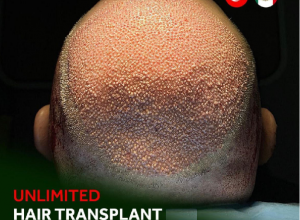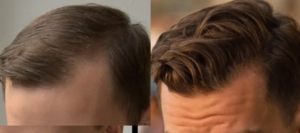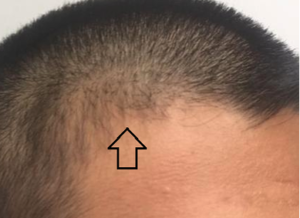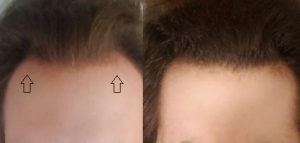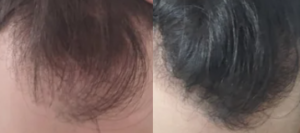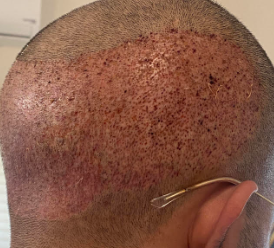I had good hair until 35 almost 36 when my hair started to aggressively thin. Started fin in 2019. The regrowth hasn’t been as good as I would have liked. My crown had never experienced any major balding like my front did. Finasteride has definitely stopped the aggressive progression but only some mild regrowth. Not sure if I should up my dose or switch to something else.
Hi there Dr. Rassman. I’ve been reading the balding blog and think it’s great!
I have a question for the blog. Do thinning areas of the scalp (regardless of what the Norwood pattern is) always eventually thin to the point where that area ends up completely shiny bald and there is no hair left in that area at all? Or can a thinning area thin to a certain degree and then stabilize like that with some hair remaining in the thinning area? So like for a example, would a person with a Norwood 6 pattern always end up completely slick bald? Or can the hair significantly thin in the Norwood 6 pattern but then stabilize with some hair remaining within that pattern?
I do not doubt that these people will deliver on this promise, but at what cost? Your out-of-pocket costs will be a bargain, but the following are real risks if you take up the ad and get a hair transplant from these folks
1- Your donor area will be depleted, and you are probably going to be bald around the side and back of the head
2- You may be over-treated with anesthetic and may not live through the surgery
3- The grafts may not grow because they were not handled properly
4- You may end up with necrosis in some of the transplanted recipient areas
5- Highly likely these are not doctors offering the service
As minoxidil-dependent hair needs minoxidil, stop it two days before your transplant and restart it two weeks later. That is my usual recommendation. If you don’t restart it, you may continue to lose minoxidil dependent hairs.
Does finasteride eventually stop working over time to either regrow or maintain hair for everyone that takes it as their genes for balding take over?
Finasteride maintains benefits; however, your hair’s ability to stop its eventual pattern may not be stopped by finasteride, just slowed down. I have seen men on finasteride for 15-20 yrs stop it, and they lost significant amounts of hair as a result suggesting even that far out (20 years) doesn’t stop finasteride’s effectiveness
Microneedling can work independently of medications but could be a better or faster response.
If you are going to take minoxidil pills, there is no need for the topical.
Note that this young man has a widow’s peak, which is a remnant of his juvenile hairline. He also has his corner hair from his juvenile hairline, which appears to be weaker and will eventually fall out as his hairline takes on a “V” shape (see arrow). Some men falsely think that this is balding, but I tell them that this is a maturing hairline is process.
The average Indian has a lower density than a Caucasian of about 1.9 hairs/follicular unit (the Caucasian average is 2.2 hairs/follicular unit), so unless his hair is very coarse, his donor area is clearly depleted. He may find that he doesn’t have enough hair to cover the donor area. Additionally, this man’s FUE was taken outside the donor area. His entire remnant Class 6 pattern was harvested. If he develops a Class 7 pattern of balding, then he will lose more than half of the hairs transplanted.
I am 37 years old and had this balding for 10 years. I started using 1 mg PO finasteride daily 1 ml topical minoxidil twice daily 1 biotin vitamin daily, Saw palmetto shampoo, plus 0.5 mm micro needling at home 2-3 times per week.
I would increase the microneedling needles to 1.25mm and reduce the treatments to once a week. That depth gets to the stem cells that control the growth of the follicles to react to the wounds. You also might consider switching to oral minoxidil. Speak with your doctor. The photos suggest that the stem cells are still there and alive, so push the depth of the microneedling t where the stem cell reside.

